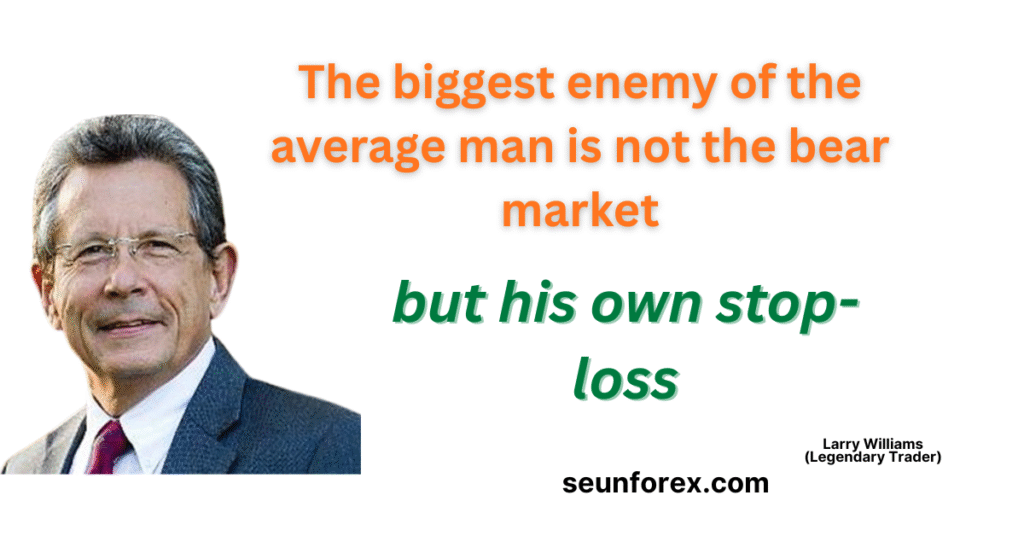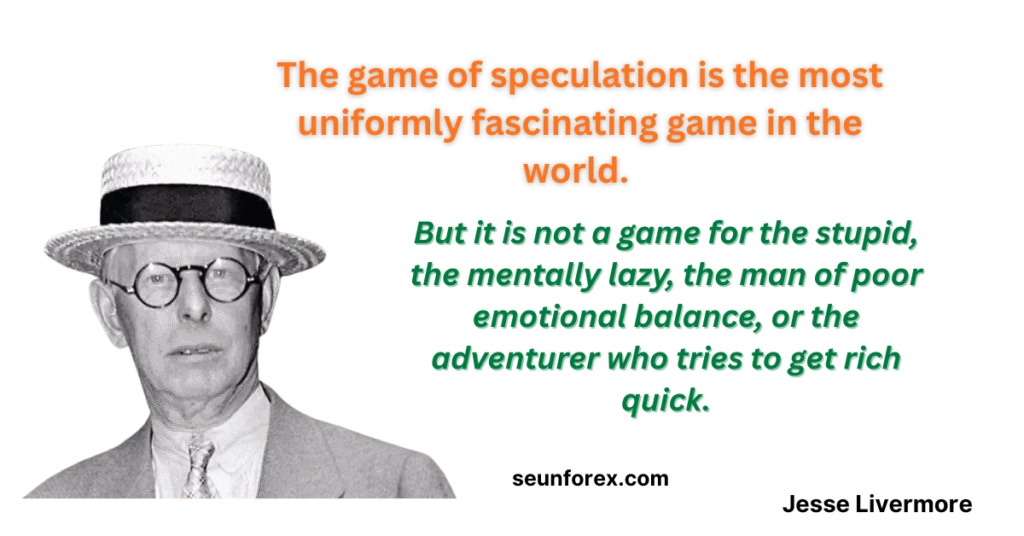
“The market isn’t hunting you. It’s simply doing what it’s designed to do—discover price.”
Most traders swear they’ve been stop loss hunted.
You’ve seen it: you place a perfect trade, price spikes just enough to hit your stop loss, then instantly reverses in your original direction. You curse “market makers,” blame “liquidity grabs,” and swear someone is watching your MetaTrader account.
But here’s the truth: no one cares about your tiny position.
The market didn’t see your stop. HFTs didn’t conspire against your order. And the “liquidity grab” wasn’t personal—it was structural.
This isn’t an opinion. It’s market microstructure.
So, let’s strip the myths and understand what’s really happening behind those ruthless wicks that seem to find your stop loss with sniper precision.
⚙️ The Myth of the Stop Hunt
Every beginner trader has a stop hunt story.
They describe the same event: price sweeps a key high or low, triggers stops, reverses, and then moves smoothly in the original direction.
Naturally, it feels like a trap.
But what if that movement isn’t manipulation—just liquidity discovery driven by institutional order flow?
Imagine the market as a continuous auction.
Every tick is a bid or offer from someone, somewhere.
Price doesn’t move because of conspiracy—it moves because of supply and demand imbalances.
When a cluster of stop losses builds above a swing high, that zone becomes a liquidity pool, a magnet for price.
Market participants—including HFTs and algorithms—know that above that level lies liquidity.
This is the foundation of market microstructure.
And liquidity is oxygen to the market.
🧠 What Is Liquidity, Really?
Liquidity isn’t some mysterious dark-pool energy.
It’s simply the ease with which orders get filled without moving price too much.
Think of it this way:
- In a liquid market, large orders can be executed quickly and at stable prices.
- In an illiquid market, even a modest order can move price significantly.
That’s why institutions care deeply about liquidity — they need to move size.
Your 0.5-lot trade doesn’t make a ripple.
Their $200 million order creates the wave.
Liquidity is the silent force behind every candle, every spike, and every reversal.
📡 Enter the Machines: The Role of HFTs
High-Frequency Trading (HFT) firms aren’t the villains of retail trader myths — they’re engineers of market efficiency.
HFTs perform market making, arbitrage, and latency trading.
They thrive on speed, not on stop losses.
Their operation is often misunderstood as a malicious stop hunt — but it’s not.
They buy and sell continuously to capture micro-profits from bid-ask spreads.
Their focus isn’t your 20-pip stop loss — it’s milliseconds and order-flow imbalances across venues.
They might appear to “hunt liquidity,” but they’re actually facilitating liquidity.
When volatility spikes, they step back.
When spreads widen, they re-enter to balance the flow.
They don’t see you — they see order flow.
And flow, statistically, includes stops — because stops are simply market orders waiting to be triggered.
🔍 Why Your Stop Keeps Getting Hit
It’s not manipulation. It’s placement psychology.
Retail traders tend to cluster stops around obvious levels:
- Previous highs/lows
- Round numbers (1.2000, 1.5000, etc.)
- Support/resistance zones
- Swing points on 1H or 4H charts
Professional traders know this. Algorithms know this. Even liquidity providers know this.
So what happens when price approaches these zones?
- Liquidity builds.
- Price accelerates toward it.
- Stops trigger (market orders flood in).
- Institutions use that liquidity to fill their opposite positions.
What looks like “manipulation” is just the market refueling itself.
The candle didn’t hunt you. It inhaled liquidity.
🏦 The Institutional Perspective
This is an excellent, clear explanation of the Institutional Perspective. To further improve your keyword density for “Stop Loss Hunt” while maintaining the professionalism of this paragraph, we can integrate the term naturally as the thing institutions are not doing.
Here is the revised section:
Revised Institutional Perspective Section (Increased Keyword Density)
Let’s shift seats.
Imagine you manage a $1 billion forex portfolio. You want to buy EUR/USD—but not all at once. If you enter aggressively, your own order pushes price higher.
So what do you do? You engineer liquidity.
You let price dip into zones where stops are concentrated, triggering a rush of sell orders. Those sell orders provide the buy-side liquidity you need. This process is not a malicious stop loss hunt; it is the fundamental mechanism of professional trading.
You’re not hunting stops—you’re feeding off them.
To you, liquidity pockets are opportunities. To retail traders, they’re ambushes. Same event, opposite perspective.
📊 The Psychology of the “Liquidity Grab”

Traders often forget: the market is not a thinking entity. In fact, it doesn’t care about your emotions, plans, or capital. Instead, it’s a decentralized reflection of human behavior and institutional process.
When price spikes to take out stops, that’s not malice—it’s mechanics. Furthermore, it is not a personalized stop loss hunt.
Stops cluster where confidence clusters. Consequently, confidence clusters where retail logic agrees. And retail logic is painfully predictable.
This is why “smart money” frameworks like Wyckoff or ICT emphasize liquidity zones. They don’t teach you to avoid them; rather, they teach you to use them. Therefore, the goal isn’t to escape liquidity grabs—it’s to trade with them.
🧩 Understanding Stop Losses as Market Orders
When your stop triggers, it converts into a market order—an instruction to close immediately at the best available price.
If you’re long and your stop is below, that’s a sell market order.
Now imagine thousands of traders doing the same thing around the same price. What happens?
- A surge of sell orders appears.
- Market makers fill those orders with buy positions.
- Price spikes briefly, then reverses once liquidity is absorbed.
That reversal you see after your stop is hit isn’t evidence of manipulation. It’s a byproduct of order absorption.
The stop didn’t cause the reversal—it enabled it.
🧮 Why HFTs Don’t Care About You
Here’s what most traders don’t realize:
HFTs trade on timescales your brain can’t process.
A human blink lasts about 300 milliseconds.
A high-frequency trade lasts 0.0004 seconds.
That’s 750 times faster than your blink.
These algorithms aren’t scanning your 4H chart or looking at support and resistance. They’re exploiting latency advantages—micro-price inefficiencies between exchanges, data feeds, and order books.
In other words, their world is nanoseconds deep, not 15-minute candles wide.
So while you’re blaming HFTs for your stop-loss trigger, they’ve already executed 10,000 trades and moved on.
You’re not on their radar. You’re in their wake.
🧱 The Real Culprit: Herd Behavior
The real reason your stops get hit is simple: you think like everyone else.
When 10,000 traders see the same “support zone,” they put their stops just below it.
When 10,000 traders trail stops at the same percentage, they get flushed at once.
Markets are designed to seek liquidity. That’s not predatory—it’s efficient.
The problem isn’t the market’s structure. It’s your predictability.
Smart traders learn to hide in the noise, not sit in front of it.
🧭 Rule of Clarity: Trade the Trap, Don’t Fall for It
Here’s a mindset shift that can save your equity:
Don’t avoid stop hunts. Anticipate them.
Every major market move starts with a trap. Price sweeps liquidity before it runs directionally.
Learn to read that sweep as a signal, not sabotage.
The pattern repeats endlessly:
- Liquidity sweep – Price takes out obvious highs/lows.
- False breakout – Retail gets baited.
- Reversal – Institutional flow resumes.
The trick? Don’t trade where retail confidence peaks. Trade where it just broke.
🔬 A Case Study: EUR/USD’s False Break
Take EUR/USD before a major news release.
You see resistance at 1.1050. Thousands of retail traders short below it, with stops above.
Minutes before news hits, price spikes to 1.1062—taking out every stop—then collapses 80 pips down.
Social media screams “manipulation.”
But let’s dissect it:
- Stops above 1.1050 = Buy liquidity.
- Institutions sell into that liquidity.
- Price falls as retail positions get flushed.
No one hunted anyone. The market simply did what it always does—seek orders, find balance, continue trend.
🧘 The Lesson So Far
The market isn’t against you. It’s indifferent to you.
Liquidity isn’t evil. It’s the bloodstream of price.
And HFTs? They’re not wolves—they’re machines that keep that bloodstream flowing efficiently.
Once you stop taking stop hunts personally, your trading psychology evolves. You shift from emotional reactivity to structural understanding.
You stop chasing ghosts and start trading flows.
⚙️ Part 2: Stop Blaming Liquidity — The Anatomy of a “Stop Hunt”

“Liquidity isn’t your enemy. It’s your teacher. It shows you where the crowd hides and where opportunity begins.”
Let’s dive beneath the surface.
If Part 1 stripped away the myth, Part 2 exposes the mechanics—the invisible gears that make these liquidity sweeps happen. Because understanding how liquidity forms, shifts, and gets consumed is how professionals time entries that feel effortless while retail traders scream “manipulation.”
📈 The Anatomy of a Liquidity Grab
A liquidity grab (what traders call a stop hunt) is not random. It follows a predictable pattern of accumulation, inducement, and displacement.
Let’s break it down step by step:
- Accumulation Phase:
- Price moves sideways.
- Smart money builds positions quietly.
- Volume dries up; volatility compresses.
- Inducement Phase:
- Market tempts retail traders into breakout trades.
- Stops gather at obvious highs or lows.
- Liquidity pools start forming.
- Liquidity Sweep:
- Price aggressively breaks structure, triggering stops.
- Retail traders panic or get trapped.
- Institutional traders absorb the flow, filling orders.
- Displacement Phase:
- Once filled, price moves strongly in the opposite direction.
- The “real” move begins.
This sequence repeats across timeframes—from 1-minute to weekly charts. What feels like chaos is actually microstructure symmetry in motion.
🏦 Engineered Volatility: Why Big Money Loves Spikes
Institutions don’t hate volatility—they create it.
Volatility provides liquidity. Without it, large orders can’t be executed efficiently. So the market “engineers” volatility moments through:
- News events (economic data, rate decisions)
- Session opens (London, New York overlaps)
- Stop clusters near key levels
Every violent candle you see? That’s price reaching into a liquidity zone.
It’s not about hunting retail—it’s about harvesting depth.
Think of it like a fisherman casting a wide net: they’re not after you, but if you’re in that school of fish swimming together (same stop levels), you’ll get caught in the sweep.
🧭 The 7 Laws of Liquidity Every Trader Should Know
If you internalize these, your perspective on market structure changes forever.
1️⃣ Liquidity Is Always at Extremes
Price doesn’t seek balance—it seeks imbalance. Liquidity pools form where traders agree most—swing highs, swing lows, or breakout zones.
2️⃣ Stops Are Fuel, Not Victims
Every stop loss represents a market order. Those orders feed price movement. Smart money waits for this influx to fill the other side of their trade.
3️⃣ The Market Moves From One Pool to the Next
Price doesn’t move randomly—it’s drawn magnetically from one liquidity pocket to another. That’s why levels “get swept” before the next major move.
4️⃣ Liquidity Creates, Then Kills Confidence
When everyone believes a level will hold, it becomes fragile. Once the majority commits, the market moves the other way.
5️⃣ False Breakouts Are Real Opportunities
A fake breakout isn’t failure—it’s preparation. It clears weak hands before real momentum begins.
6️⃣ Liquidity Hides in Timeframes
A stop hunt on the 5-minute chart might be noise on the 4-hour. Always zoom out before reacting emotionally.
7️⃣ Institutions Think in Liquidity Blocks, Not Lines
Retail traders see “support/resistance lines.” Institutions see zones of liquidity—a range of prices where they can safely execute volume without slippage.
Master these principles, and you’ll stop trading against liquidity—you’ll start surfing it.
🧠 How Institutions Think About Retail Behavior
Institutional traders don’t need to “see your stops.”
They can predict them.
Retail logic is painfully consistent:
- “I’ll place my stop just below support.”
- “If it breaks this high, I’ll go long.”
- “I’ll tighten stops after I’m up 20 pips.”
This predictability creates behavioral liquidity zones.
So when price dips just enough to trigger your stop, it’s not manipulation—it’s pattern recognition.
The pros have learned the rhythm of human fear.
They’re not taking your money—they’re harvesting your predictability.
💡 The Real Battle: Predictability vs Adaptability

Trading isn’t retail vs institutional. It’s predictable vs adaptive.
Predictable traders:
- React emotionally.
- Cluster stops in obvious spots.
- Chase moves too late.
Adaptive traders:
- Expect liquidity sweeps.
- Enter after the grab, not before.
- Use structure and patience as filters.
Your goal isn’t to avoid pain—it’s to understand where pain will occur, so you can profit from it.
🔍 How to Trade Liquidity Like a Pro
Let’s get tactical.
Here’s how professional traders use liquidity dynamics in their setups:
1. Identify Equal Highs/Lows
Two or more highs/lows in a row = a pool of stops. That area will likely be swept before any major move.
2. Wait for the Sweep, Then Confirmation
Don’t guess. Let price grab liquidity first—then wait for rejection signals (e.g., pin bar, engulfing, or BOS).
3. Use Volume and Time
Liquidity hunts often occur near major session opens (London, NY). Volume spikes confirm participation, not randomness.
4. Think in Zones, Not Lines
Mark liquidity areas as bands—20 to 50 pips thick—because real fills happen in ranges, not precision lines.
5. Place Stops Beyond the Crowd
Your stop should survive the sweep. If retail hides 10 pips below support, you hide 20. That buffer costs less than being repeatedly stopped out.
6. Target Opposite Liquidity Pools
Trade from one pool to the next. If you buy after a liquidity grab, target the next obvious high where stops await.
7. Journal Every Sweep
Document every false breakout you see. Over time, you’ll see that what once looked like randomness is structured liquidity flow.
⚖️ The Myth of Fair Markets
Many traders cling to the idea that markets should be “fair.”
But fairness is a retail illusion.
Markets exist to facilitate trade—not to protect feelings.
Liquidity providers, HFTs, and institutions have one job: keep price discovery efficient. In that process, the weakest participants naturally get displaced.
It’s not unfair—it’s fractal Darwinism.
The market rewards adaptability, punishes rigidity, and pays those who understand its structure.
🧘♂️ Trading Psychology: The Emotional Detox
Here’s the uncomfortable truth:
Ultimately, blaming manipulation is easier than admitting your structure lacks precision. Indeed, it’s easier to say “they hunted my stop” than “I placed it in a predictable spot.” This constant finger-pointing is the core of the stop loss hunt myth.
But that mindset traps traders in learned helplessness. However, when you take responsibility for your stop placement, you regain control. By the same token, when you study liquidity behavior, you turn fear into foresight.
The market stops being your enemy—and becomes your map.
🧩 Practical Checklist — The Liquidity Trader’s Routine
Before you execute any trade, run through this checklist:
✅ Have I identified obvious stop zones?
✅ Is there equal structure on both sides of current price?
✅ What session are we in—are HFTs most active now?
✅ Has liquidity been swept? If not, expect volatility.
✅ Are volume and time confirming intent?
✅ Where are the opposite liquidity pools for targets?
✅ Is my stop beyond retail clusters?
✅ What would invalidate my idea? (structure, not emotion)
Trading without this awareness is like swimming with sharks blindfolded.
📊 Case Study: The NASDAQ Stop Flush
A Case Study: The NASDAQ Stop Loss Hunt Flush
In February, during pre-market hours, NASDAQ futures printed a clean double bottom at 16,200. Retail forums exploded: “This is the bottom!” Stops gathered just below. Minutes after New York open, a sharp 60-point drop cleaned those stops—then rocketed 300 points upward. To the untrained eye, it looked like a classic stop loss hunt.
But here’s what really happened:
Institutions needed long entries. They engineered a sell-side flush to gain liquidity. Once stops triggered, the order book refilled. Price shot upward—fueled by trapped sellers. It wasn’t personal—it was procedural.
🔬 A Quick Look at HFT Behavior
Let’s be precise about what HFTs actually do:
- Market Making: Providing both buy and sell quotes, profiting from spread differences.
- Statistical Arbitrage: Exploiting short-lived price discrepancies across correlated instruments.
- Latency Arbitrage: Using faster connections to capitalize on millisecond delays between venues.
Crucially, none of these strategies require knowing your stop losses. Therefore, the entire idea of a malicious stop loss hunt driven by these firms is flawed.
HFTs exist in a layer of the market you don’t even interact with. Their edge is technological, not psychological. When you understand that, you stop blaming machines for human errors.
📘 The Takeaway: Be the Liquidity, Not the Liquidity Source
The goal of every professional trader is simple: don’t provide liquidity—exploit it.
That means:
- Don’t cluster your stops where everyone else does.
- Don’t enter breakouts without context.
- Don’t react emotionally to wicks and spikes.
Instead:
- Let the market show you where the stops are.
- Wait for the sweep and structure shift.
- Trade with the liquidity flow, not against it.
Understanding the stop loss hunt myth helps you think like liquidity, not fear it.
🧭 Final Words: The Market Doesn’t Hate You
It’s time to end the victim mentality.
In short, the myth of the personalized stop loss hunt must end.
The market doesn’t hate you. HFTs don’t care about you. Liquidity isn’t out to get you.
You’re simply participating in a living system—one that rewards precision, patience, and adaptability. Consequently, when you stop blaming and start studying, your trading edge changes.
📌 Next Step: Control Your Edge
If stopping the blame and taking control sounds right, your next move is mastering the mental game.
Learn the strategies top traders use to control fear, greed, and the urge to chase:
👉 Funded Traders Guide to Mindset and Trading Success
(Read this to transform from an emotional, reactive trader into a disciplined, strategic one.)
You move from trader to observer, from observer to strategist.
And the moment you stop fighting liquidity… you begin to move like it.
📚 Expert Resources to Boost Your Knowledge
We’ve debunked the myth of the personalized stop loss hunt using real market concepts.
Dive deeper into the technical side through these expert references:
1. Debunking the Myth
🔗 Expert Reference: Stop Hunting in Trading
URL: https://www.investopedia.com/terms/s/stophunting.asp
(Read how the industry defines “Stop Hunting” and why your new structural understanding is powerful.)
2. Understanding the Mechanics
🔗 Expert Reference: High-Frequency Trading (HFT)
URL: https://www.investopedia.com/terms/h/high-frequency-trading.asp
(Learn how HFTs use speed and arbitrage—not targeting—to manage liquidity.)
3. Mastering the Core Concept
🔗 Expert Reference: Market Microstructure
URL: https://www.morpher.com/blog/market-microstructure
(Discover how market microstructure defines the process of order flow, liquidity, and execution.)
✅ Key Takeaways
💡 The Stop Loss Hunt is largely a myth — what feels like manipulation is often market microstructure at work.
💡 Liquidity isn’t manipulation — it’s the heartbeat of the market, creating opportunities for those who understand it.
💡 Stops are fuel, not failure — they provide energy for future price direction.
💡 HFTs don’t hunt your stops — they balance institutional order flow, not retail pain.
💡 Trade after the liquidity sweep, not before it — the real edge comes from patience and timing.
💡 Patience beats prediction. Every. Single. Time.
Follow for More Trading Deep Dives
🔗 X: @SeunForex
🎥 YouTube: @SeunForex